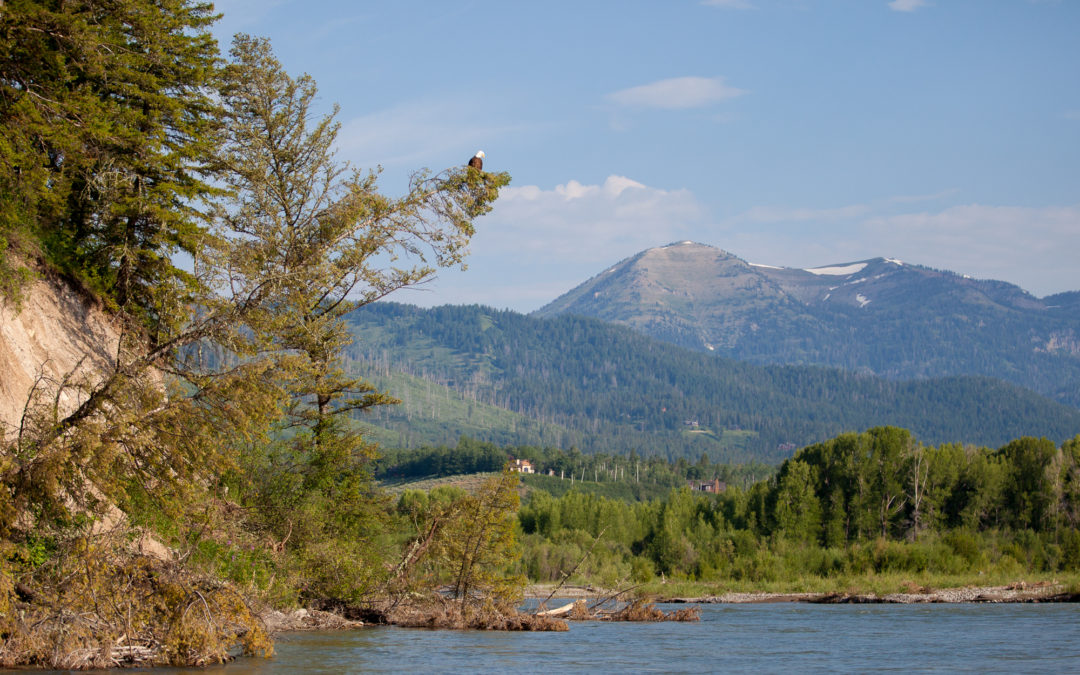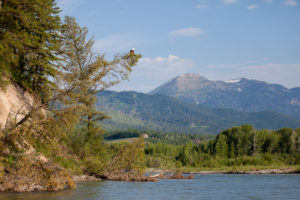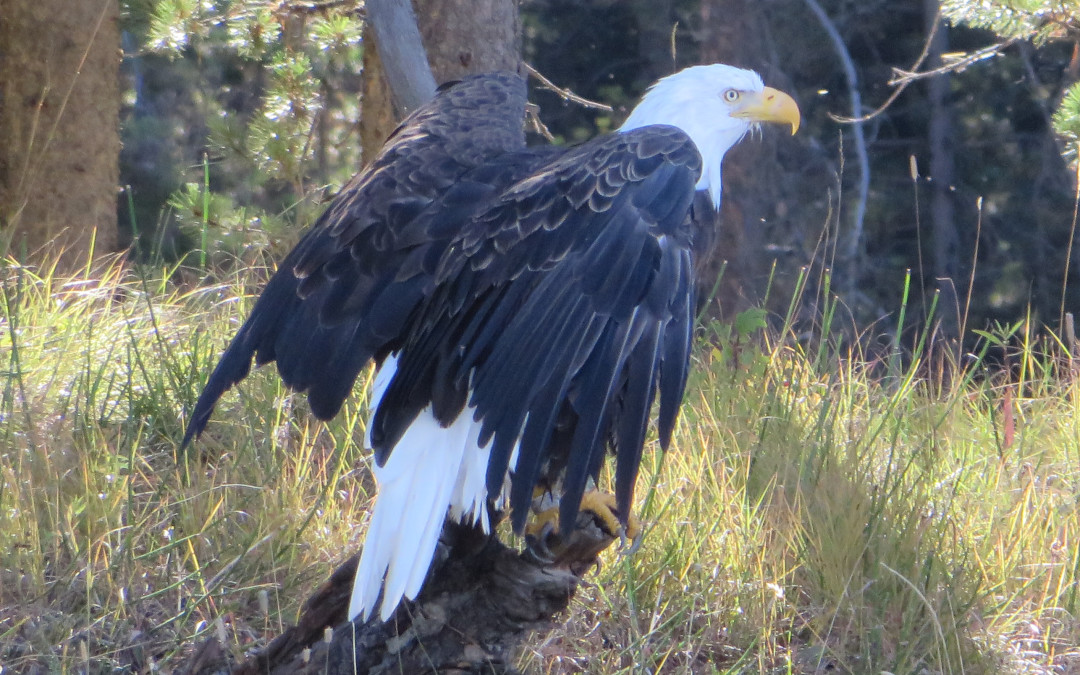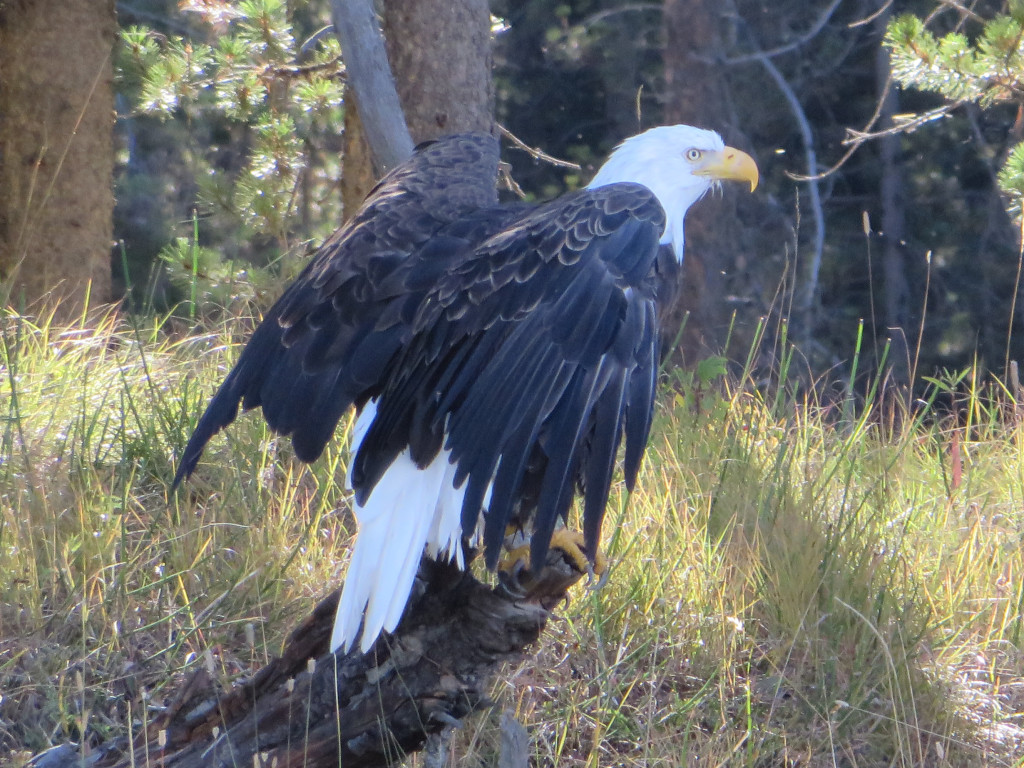
Sign up Now for Snake River Float Trips!
by Kyle Kissock, JHWF Communications Manager
Beginning May 5th, we invite you to kick-off your Sunday mornings with guided wildlife-watching adventures on the Snake River!
Veterans and newcomers alike are welcome to join us for the 10th season of Nature Mapping Snake River Float Trips with program partner AJ DeRosa’s Jackson Hole Vintage Adventures. Float trips cost $30 and embark from the Wilson Bridge every Sunday morning through early October.
These scientific voyages help gain a better idea of what species of mammals, birds and amphibians utilize this eight mile section of river. They are also fun opportunities to connect with others from the Nature Mapping community, while learning a bit more about local ecology and wildlife identification along the way.
Why have we been asking you to help us collect data along the Snake River for 10 years?

Teton County Habitat Value Map. Areas in green represent “high value” while yellow represents “intermediate” and red represents “low value”.
For starters, if you look at the Teton County Habitat Map, you’ll notice Teton County has labeled nearly all of the habitat along the Snake River green, meaning “high value” for wildlife. You’ll also notice most of what is considered “high value” is riparian habitat; rivers, lakes, streams, and adjacent vegetation. Riparian habitat is relatively scare in Wyoming; it only comprises 1.2 % of Wyoming’s total surface area (for comparison, sagebrush dominated ecosystems are estimated to cover as much as 60% of Wyoming’s landscape). Yet a majority of the state’s animal species rely on it at some point during their life cycles, making healthy riparian zones (like the Snake River bottom) disproportionately important to maintaining healthy wildlife populations.
Floating the river at regular intervals for a decade has provided Nature Mapping Jackson Hole with a long term data set we can provide to scientists (like those involved with the construction and maintenance of the levee system) to gauge the health of the Snake River in our area. This is especially important because the stretch we float, flows mostly through private land where wildlife managers do not regularly conduct systematic censuses.
We can also begin to explore trends in the data ourselves. For instance, we’ve seen a decrease in beaver and otter sightings over the course of our float surveys. Are we noticing a decline related to what has been observed in Grand Teton National Park, where beaver populations have decreased by up to 80% over the last 40 years? On the other hand, sightings of Bald Eagles have increased each year since 2015. Last year, we set a record with 222 Bald Eagle observations (average 12 per trip), which trumped the previous record set in 2017, of 171 (average 8 per trip). Along with Bald Eagles, observations of Canada Geese, Spotted Sandpipers, and Common Mergansers have all been on the rise each of the last four years.
Lead volunteer Tim Griffith generously compiles a full report of our observations at the end of each float season. You can read Tim’s full 2018 report here. You can also check out previous years of data here and let us know if you can identify any wildlife trends on your own!
Our Bald Eagle data is also a great example of how we should be careful when making conclusions from our float data. For instance, each of the last three years our Bald Eagle sightings have peaked in mid-August, which also happens to be when river flow (or discharge) is at .or near its weakest. One might conclude that the low-water means easier fishing and scavenging for the eagles, and that Nature Mappers have discovered that this is the time a birder is mostly likely to encounter an eagle on the Snake River. But perhaps less discharge simply means a slower float, and thus more time for Nature Mappers to sight eagles from the boat?
Flow rate of the river is one of many hidden variables that we should be aware of when we make data comparisons. Everything from shifting river channels to the skill and number of nature mappers on board can influence what we observe. What we can say for sure, is that float data shows presence (not absence) of wildlife species. Our data is still extremely helpful in understanding what creatures are utilizing the Snake River corridor and potential timing of usage, such as when birds are migrating, and if timing of migrations is changing. Thanks to the number of variables at play, Snake River Float Trips are a fascinating study in how complicated getting a full understanding of an ecosystem can be!
If you’d like to sign up for this year’s floats you can contact us at info@jhwildlife.org or Tim Griffith at timgrif396@gmail.com. Trips depart from the Wilson Boat ramp early, Sunday mornings. No prior boating experience is needed.
We hope you’ll join us on the water!




